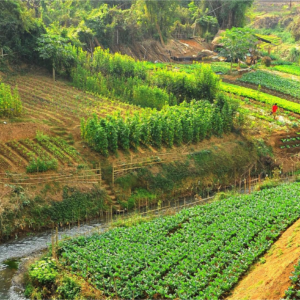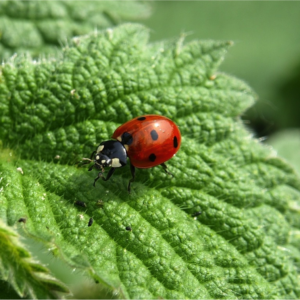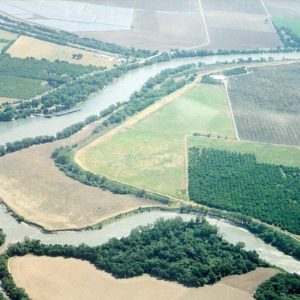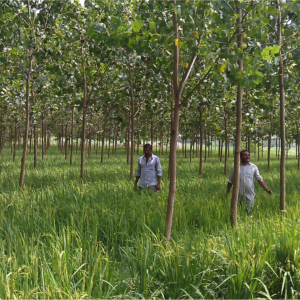This Earth Day, we’re celebrating the many ways in which integrated landscape management (ILM) also means insect-loving management.
ILM is the process through which community stakeholders come together across sectors and interests to collaboratively plan and design their environment, agreeing on sustainable ways to use land. EcoAgriculture Partners promotes ILM around the world because we fiercely hold to a vision of sustainable landscapes capable of supporting thriving people, food, and nature worldwide. With ILM, diverse, locally-responsive, and just solutions for land and resource use become possible.
What does that have to do with insects?
Biodiversity-friendly agricultural practices used to produce crops and livestock, such as organic cropping, integrated pest management, and agroforestry are vital to the protection of bees and insects. These systems and strategies are bound to intersect and overlap, and integrated landscape management allows actors across sectors to collaborate, select and combine them in ways that best address the condition and goals of particular landscapes. Integrated landscape management facilitates community-led efforts to put an end to practices that harm insects and pushes us toward resilient and sustainable agricultural ecosystems where the life-supporting systems we rely on remain intact.
5 insect-loving practices that often feature in integrated landscapes
1. Organic agriculture. Pesticides are, it goes without saying, really bad for insects. Certain classes of pesticides are persistent in the environment, and continually harm insects (and humans) even years after they’ve been applied. Industrial farming practices utilize large amounts of pesticides, herbicides, and inorganic fertilizers. Organic crop management operates without any of this and involves a more diverse crop rotation. Implemented on a landscape scale, and starting with areas closest to waterways, upwind, and nearest to wild refuges, these practices can make a significant difference to biodiversity conservation. On average, farming systems that embrace organic farming practices have 30 percent higher species richness than conventional ones.

By not applying chemicals on the sloping farm fields by this stream in Laos, the organic farm pictured here protects habitat for insects and many other species both on and off the farm.
2. Integrated pest management, another practice embraced in ILM, encourages a combination of natural pest control mechanisms that contribute to better soil health, and in turn, the growth of healthy crops with the least possible disruption to agro-ecosystems. IPM practices help ensure that insect species thrive. For example, the use of perennial plants, living fences, and buffer strips helps create habitats for beneficial insects and ensures the maintenance of native species.

Ladybugs (also known as ladybird beetles or lady beetles, Coccinellidae) are a family of insects that prey on crop pests like aphids. Providing habitat for them to nest and reproduce nearby helps keep pest populations in check.
3. No-till and cover cropping practices implemented on the landscape scale help ensure that the natural processes that keep organic matter in the soil continue and that native insect species thrive. For instance, the continued presence of native burrowing bees that would otherwise have been killed or forced to relocate by plowing allows for the life cycles of below ground parasites and symbiotic organisms to continue, and for those bees to provide pollination to crops. Everybody wins.

This crimson clover cover crop on a field in Oregon provides forage for pollinators while building soil nitrogen and preventing erosion.
4. Shelterbelts and windbreaks between fields and along watercourses, and even small patches of wild habitat within farm-field mosaics, provide year-round structure to the landscape that is critical for insect density. For bees, particularly, the closer a nest site is located to pollen and nectar sources, the less energy female bees need to spend commuting back and forth, and the more resources they can put into their offspring.

The riparian buffer strips and planted field margins of this farm along the Sacramento River in California provide critical habitat for the threatened Valley Elderberry Longhorn Beetle.
5. Large-scale agroforestry practices like multi-story agroforestry cropping systems (e.g. shade coffee and cocoa, white acacia (faidherbia) with annuals) and agropastoralism also help increase insect diversity and density by providing diverse food sources and year-round shelter and nest sites. Agroforestry landscapes use integrated planning to support these practices with market opportunities and price premiums as well as locating them where the ecosystem services they provide are most needed.

Farmers showing their Paddy and Poplar Trees based agroforestry, Haryana, India. Photo credit: World Agroforestry Centre/ Devashree Nayak
When actors across sectors come together to combine these practices in their landscapes, a more rapid and effective shift toward thriving co-existence between people, our food systems, and insects occurs. Sweet “side effects” include more abundance and diversity in our own diets, more security in our livelihoods, and more beauty in our communities.
If you’d like to support more communities to practice insect-loving management, please consider a gift to EcoAgriculture Partners’ Earth Day campaign or simply share this post with the hashtag #EarthDay4insects.
Featured Image Courtesy of World Agroforestry Centre/ Devashree Nayak. Additional Images by Klára Ulová from Pixabay











